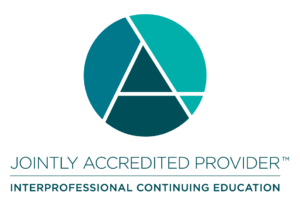Career Objetives
 Upon completion of program, participants should be able to:
Upon completion of program, participants should be able to:
- Employ a shoulder checklist method including interpretation techniques for the rotator cuff and interval, biceps labral complex, inferior glenohumeral ligament complex, and capsular structures including the anterior band.
- Identify glenoid wear patterns in multidirectional instability, microinstability, anterior and posterior instability.
- Develop a knee checklist with foolproof ACL diagnosis and techniques for prospective diagnosis of all types of meniscal tears, differentiating circumferential surface from cross sectional tear patterns.
- Introduce strategies in the evaluation of the cruciate ligaments, posterolateral instability, and articular cartilage.
- Utilize a femoroacetabular impingement checklist to distinguish between FAI and DDH pathology.
- Discuss approaches for accurate acetabular-labral tear identification. Introduce orthopedic articular cartilage classification for the acetabular roof.
- Develop an ankle checklist including articulations, ligaments, tendons and articular cartilage.
- Describe all types of soft tissue ankle impingement and posterior ligamentous and subtalar joint anatomy.
- Develop a wrist checklist with emphasis on the intrinsic and extrinsic ligaments and the triangular fibrocartilage.
- Explain the relevance of perilunate instability, SLAC and triscaphe arthritis.
- Develop an elbow checklist with the ability to differentiate epicondylitis from instability patterns.
Target Audience

- Board certified general radiologists and trainees interested musculoskeletal imaging.
- Orthopedic Surgeons
- Radiology Fellows in Training
- Radiology Assistants and MRI Technologists
- Practicing physicians in sports medicine and related clinical subspecialties who desite to familiarize themselves with the current role of imaging in patient evaluation.
- Allied health care professionals who desire to have an update on the state of current imaging as an aid to patient management for the disease of the musculoskeletal system.
Joint Accreditation Statement

In support of improving patient care, this activity has been planned and implemented by Partners for Advancing Clinical Education (PACE) and CME Science. PACE is jointly accredited by the Accreditation Council for Continuing Medical Education (ACCME), the Accreditation Council for Pharmacy Education (ACPE), and the American Nurses Credentialing Center (ANCC), to provide continuing education for the healthcare team.
Physician Continuing Medical Education
Main Program: PACE designates this live activity for 18 AMA PRA Category 1 Credit(s)™. Physicians should claim only the credit commensurate with the extent of their participation in the activity.
Mini-Fellowship Workshop: PACE designates this live activity for 8 AMA PRA Category 1 Credit(s)™. Physicians should claim only the credit commensurate with the extent of their participation in the activity.
Disclosure of Conflicts of Interest
PACE requires every individual in a position to control educational content to disclose all financial relationships with ineligible companies that have occurred within the past 24 months. Ineligible companies are organizations whose primary business is producing, marketing, selling, re-selling, or distributing healthcare products used by or on patients. All relevant financial relationships are mitigated according to PACE policies.
Technologists:
Main Program: This course is approved for 17.5 ARRT Category A CE credits for those technologists attending the entire course.
More Questions About the Course?
Please contact CME Science at
info@cmescience.com or
855-383-7116 or 650-440-4424